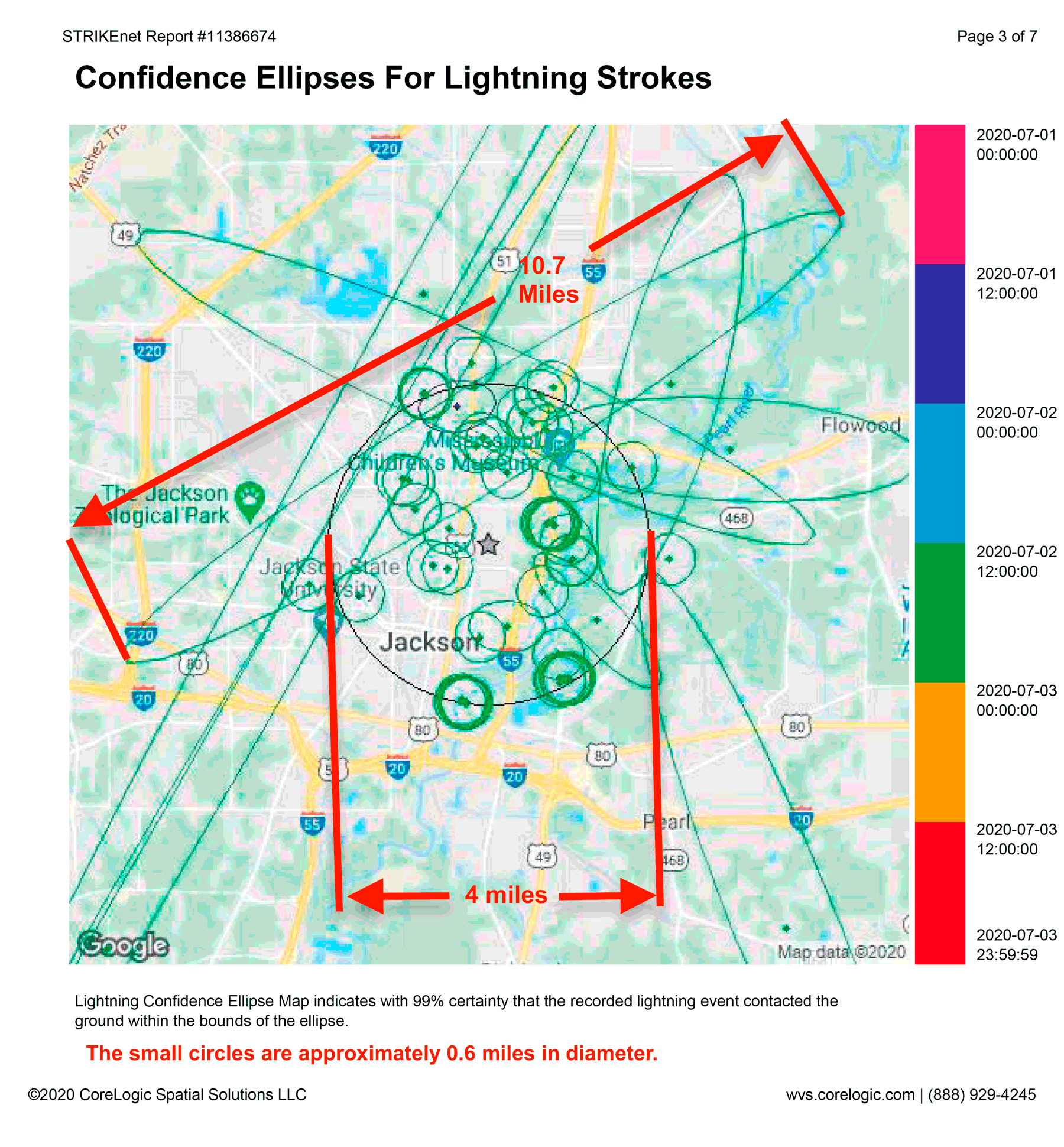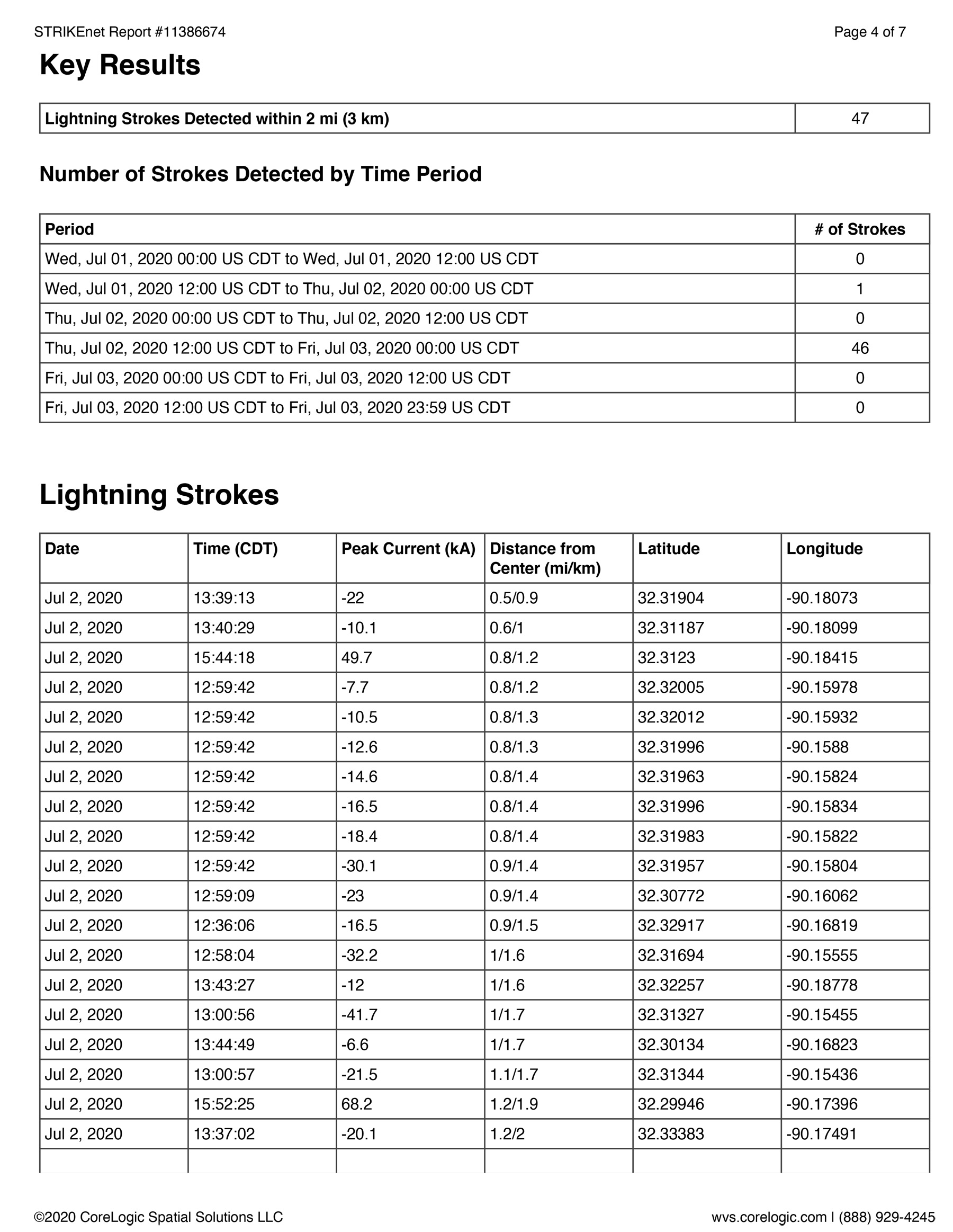The U.S. National Lightning Detection Network (NLDN) is a commercial network operated by Vaisala. It is the only lightning detection network that covers the US. It is used by the US Government.
It is not perfect:
1. It can miss 1 out of every 20 lightning events. Its cloud-to-ground flash detection efficiency is greater than 95 percent. Hence, it may miss 5 percent of the lightning events. Source: https://www.vaisala.com/sites/default/files/documents/MET-G-NLDN-Brochure-B210412EN-E_Low.pdf
2. It may not acquire accurate information about forked lightning - multiple attachments points to the earth. In tests carried out in the US and Japan at least half of the negative flashes and more than 70 percent of positive flashes were forked lightning. Source: https://www.weather.gov/safety/lighting-myths .
At one time, you could purchase lightning strike data directly from Vaisala. However, now you have to go through a third party: either CoreLogic or Verisk/Xactware/Benchmark. I believe that Benchmark only sells subscriptions to other companies (insurance).
Anyone with a credit card can purchase a lightning strike report from CoreLogic for $95 USD. In addition to depicting the lightning strike data both graphically and in tables, you can optionally request confidence ellipses at no cost. According to Vaisala and Corelogic, there is a 99% certainty that the recorded lightning event contacted the ground within the bounds of the ellipse. The tightest ellipses, I have seen are circles with a radius of approximately 0.3 miles. In the sample CoreLogic report above, there are several confidence ellipses with the distance between the major axis greater than 5 miles. It is difficult to determine that these are ellipses because they extend off of the page.
Below are the Corelogic confidence ellipses and table data from one of my requested Core Logic lightning strike reports.


I have yet to see any graphical data and/or confidence ellipses in any Benchmark report. I assume that the distances given from the lightning strike to the referenced location in the Benchmark reports are from the center of the ellipse and not the closest edge of the ellipse.